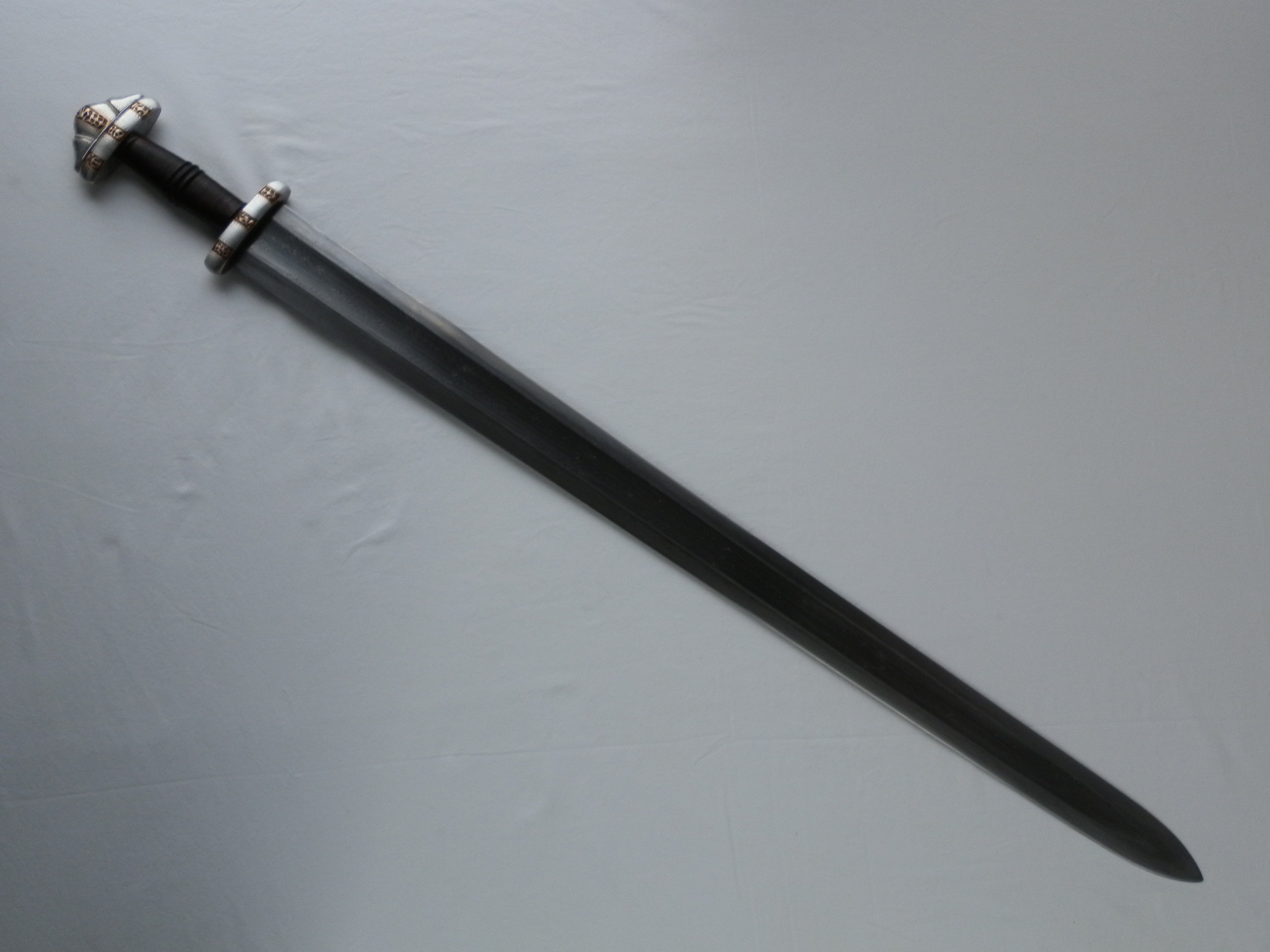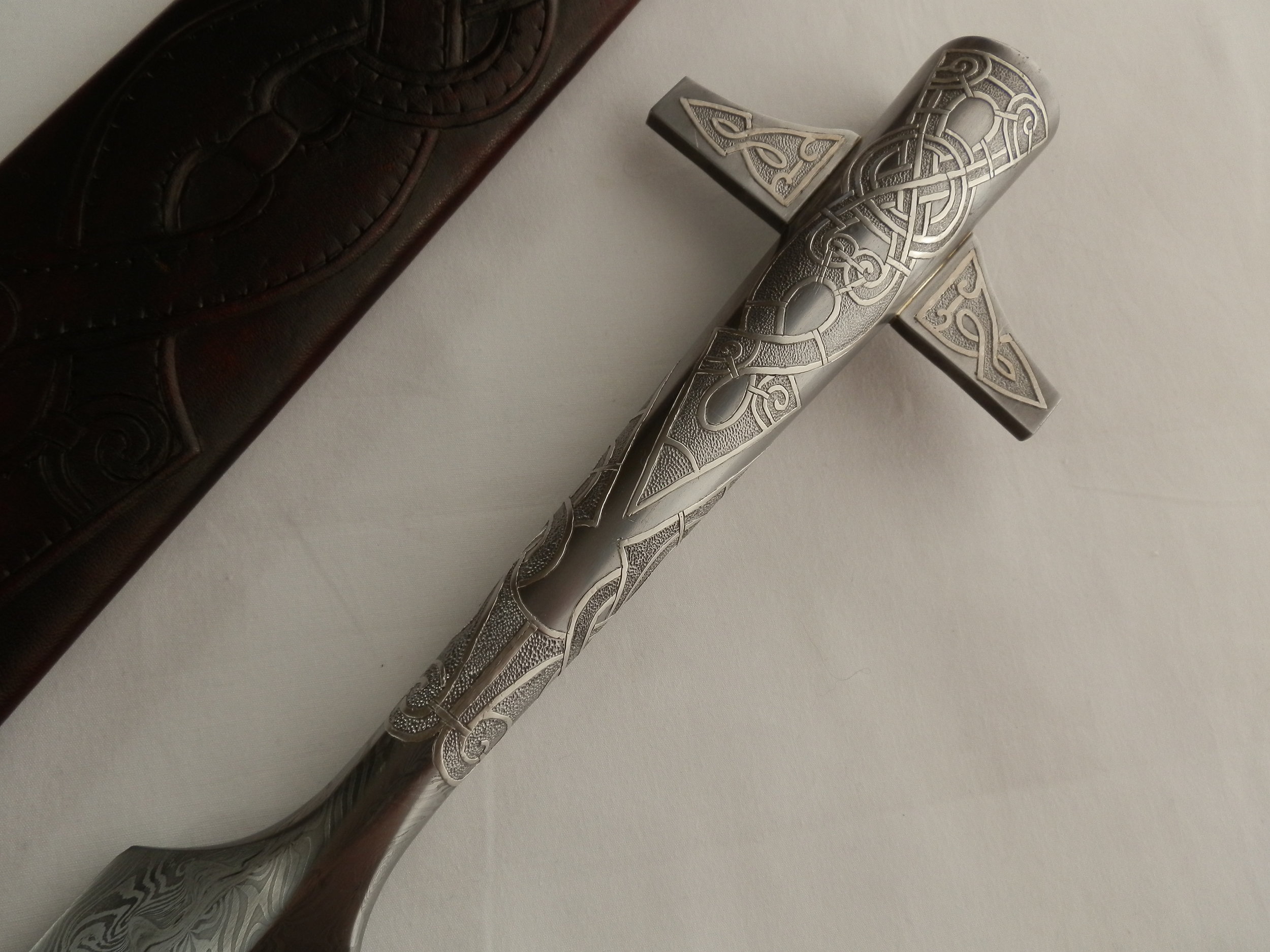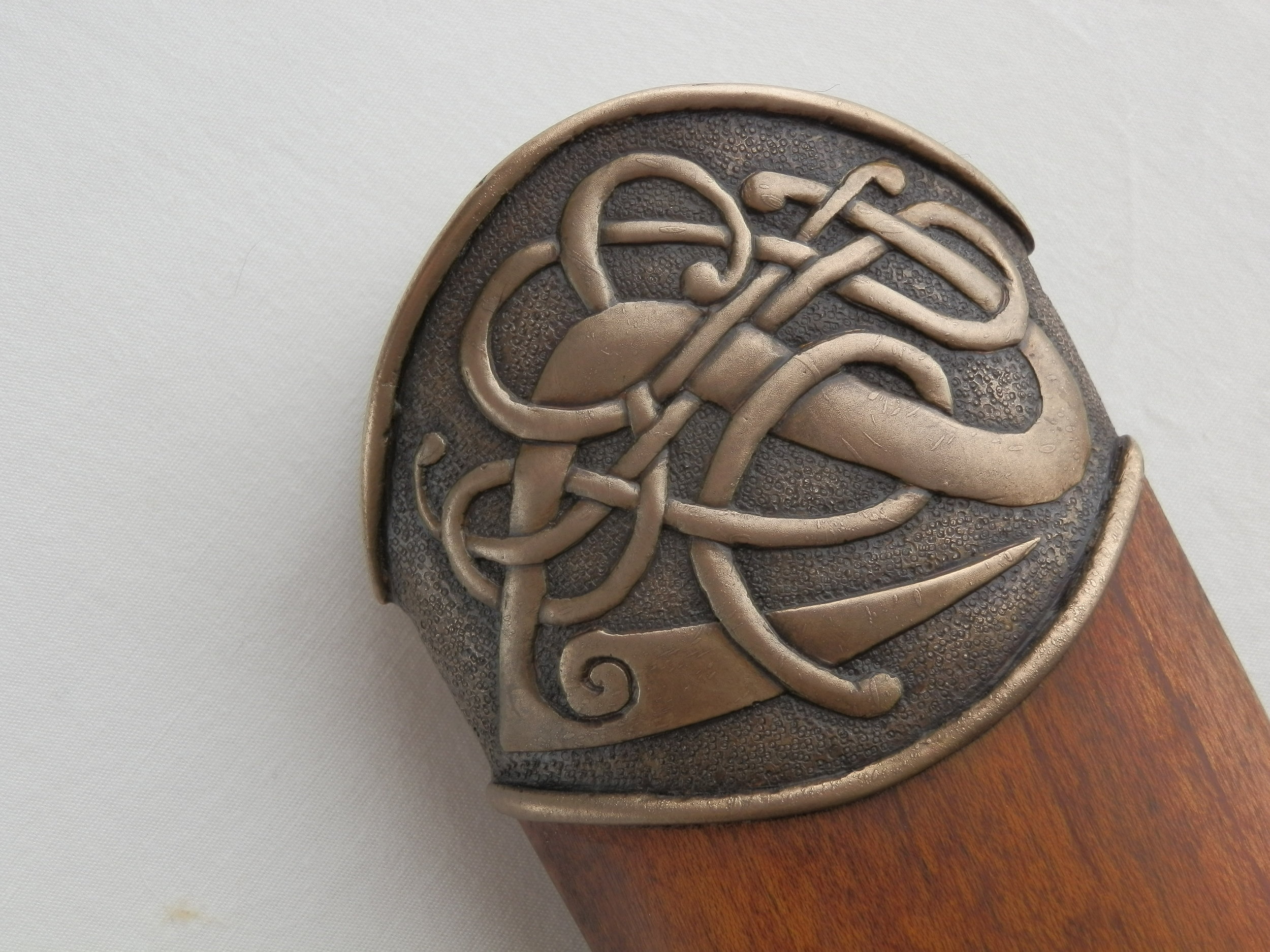Royal Ontario Museum Viking Sword Reproduction.
This viking sword is a commission by the Royal Ontario Museum, and is a reproduction of a sword currently held in their collection, in Toronto Canada.
It has a double faced blade, with one side being composed of two pattern welded bars , and the other side having an inlaid pattern welded design. The surface of the hilt is overlaid with bronze wire.
















Reproduction of the Steinvik Sword.
The hilt of this Viking era sword has hand carved bronze plaques, and is inlaid with silver and copper wire. The blade has a four bar pattern welded core with high layer laminate edge. The sword is based off of an original archaeological find from Norway. The scabbard is of inspired design and has carved antler fittings, tooled leather and a cast bronze chape.











Nocera Umbra.
This was by far the most difficult sword I have ever made. This reproduction is based off of an original archaeological find of a spatha from the 7th century, found in the Northern Italian village of Nocera Umbra. The hilt is made from bronze filigree that has been gold plated. The guard spacers are horn and the grip is olive wood. The blade has a three bar core with high layer edge. Every surface of the sword's hilt furniture is different from its opposing side.













Pattern Welded Viking Sword and War Spear
This pattern welded viking sword has a carved antler handle. The pommel and guard are made from mild steel that has been inlaid with silver. The blade has a three bar pattern welded core with a high layer laminate edge. The scabbard is from tooled leather with a cast silver chape and a carved antler "belt bridge". The war spear has a pattern welded wolf's tooth pattern and a silver inlaid socket.


























Autumn Sword
This sword was made as part of a project to represent the season of Autumn. The motifs all represent some aspect of the Fall season. On the pommel, the ram depicts the culling of the herd. The guard represents bound wheat that has been harvested. The blade is pattern welded with a core of straight lines like the empty furrows of the fields. The steel of the edge actually has an old scythe folded into the mix. The scabbard throat depicts a bound scythe and the scabbard itself is carved with a fruit tree motif, with very few fruits and leaves left. The serpents in the tree are meant to reflect the anxiety felt for the coming winter. The chape has a stylized beast that symbolizes the spirit or active life of the land retreating under the earth to remain dormant for the winter.














Other swords
Here are some shots of a few other swords I have made.




































